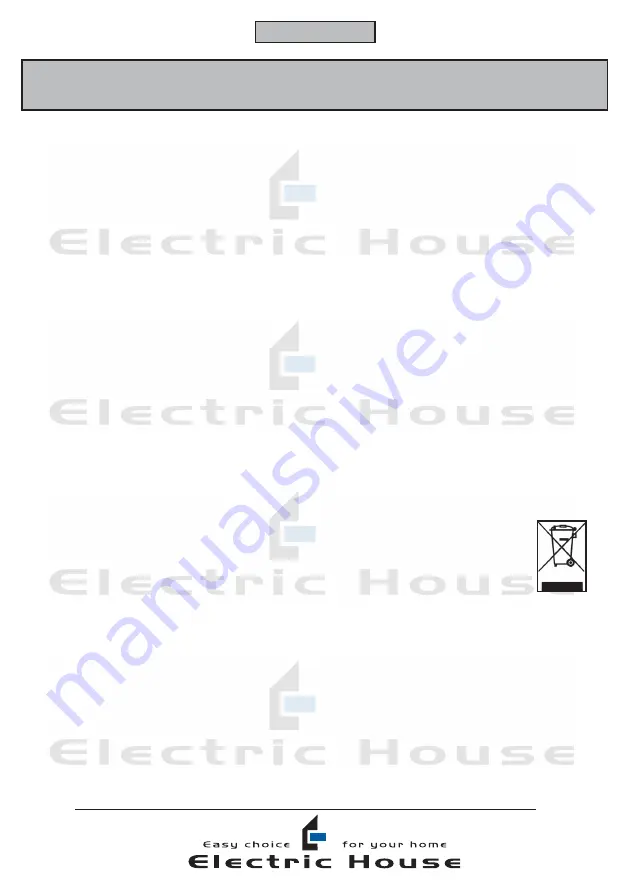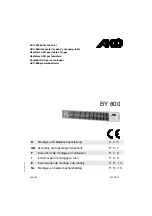
12
Special safety instructions
Not suitable for use outdoors, in bathrooms or in
other wet or damp environments.
Do not use if the radiator is wet.
Caution: can become hot! Always place at a safe
distance from inflammable objects such as
furniture, curtains etc. The radiator must always
be at least 50 cm from other objects.
Do not cover.
Do not place immediately under a wall socket.
Always place vertical on all four wheels on a firm,
level surface.
If an extension cable is used, it must be as short
as possible and always be fully extended.
Never allow the cable to rest on the heating ribs
when the radiator is switched on.
Never connect other appliances to the same mains
plug as the radiator.
If any oil leaks from the heating ribs, take the
radiator to an authorised dealer for repair.
The radiator can emit a low noise when switched
on. This is normal.
If the radiator is to be used in a cold room after
storage in a warm room, allow to stand for at least
2 hours in the cold room before switching on.
Use
Fit the wheels (4) to the radiator and place it on
a level surface.
Connect to the mains.
Set the thermostat dial (5) to the maximum
temperature.
The radiator will switch on when the function
selector (6) is set to one of the power levels,
depending on how much heat is required and how
fast the room is to be heated. The pilot light will
light when the radiator is switched on.
ENGLISH
INSTRUCTION MANUAL
Once the room reaches the required temperature,
turn the thermostat dial slowly anti-clockwise
until the pilot light switches off. The radiator will
now automatically switch on and off to keep the
room temperature constant.
To switch off, turn the function selector to „0“.
The radiator is fitted with a timer. You can set the
time you want the radiator to run by setting the
timer control (3) to the number of hours you
want (max. 3).
When the set time has elapsed,
the radiator will automatically switch off.
Disconnect from the mains when not in use.
Cleaning
Wipe the radiator regularly with a well-wrung
cloth, and always keep the heating ribs (1) free
of dirt and dust. Allow to cool completely before
cleaning!
Do not use strong, abrasive or corrosive substances
to clean the radiator as they can damage the
components.
Avoid damaging the radiator surface, as this may
cause rust.
Environmental information
You can help protect the environment!
Follow local environmental regulations:
Dispose of unwanted electrical
equipment at an approved refuse
disposal centre.

































